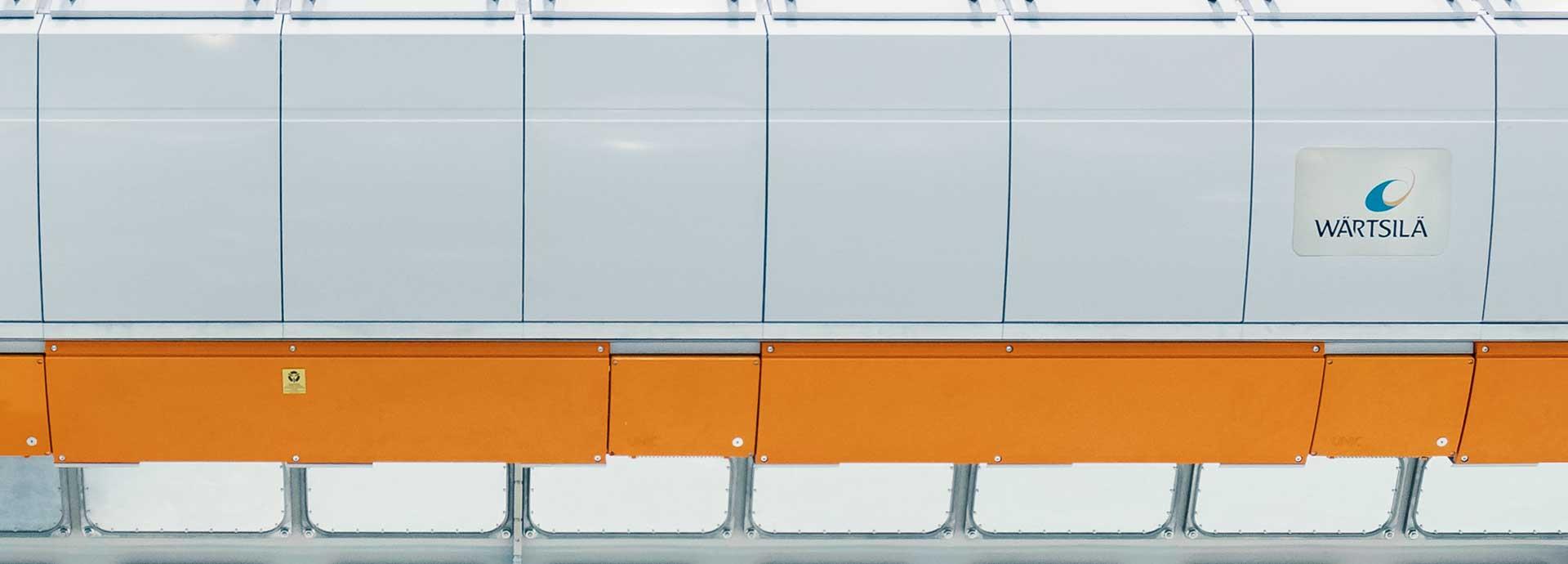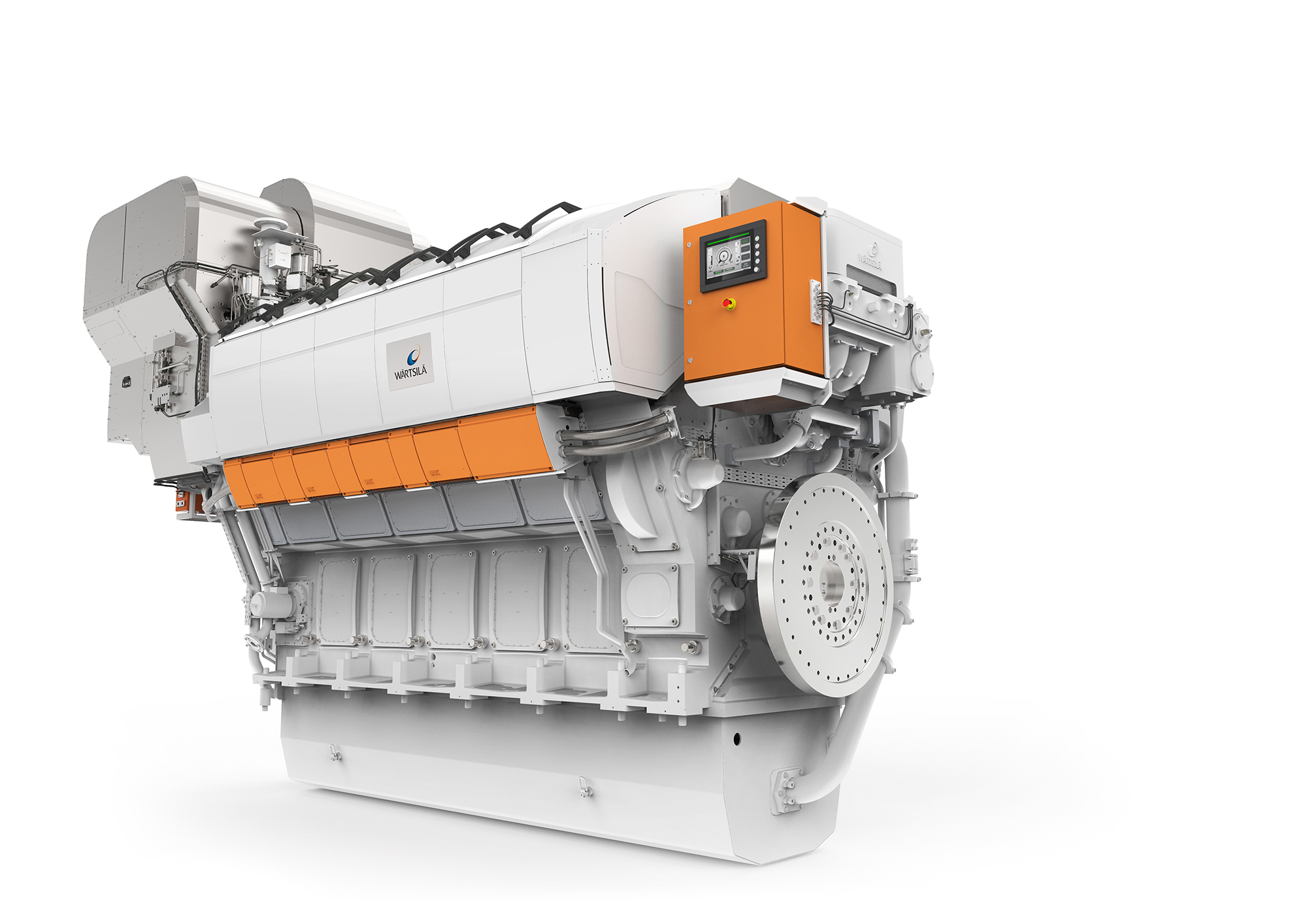

If you’re looking to slash vessel fuel consumption, emissions, maintenance costs and downtime, look no further than the Wärtsilä 31. This versatile, modular four-stroke ship engine gives you unprecedented fuel and operational flexibility, helping you save as much as 20% in maintenance costs and €10,000 a day on your fuel bill.
The Wärtsilä 31 maritime engine platform includes diesel, gas and dual-fuel variants – all ready to operate on a wide variety of fuels like:
- heavy fuel oil (HFO)
- marine diesel oil (MDO)
- low viscosity or low-sulphur fuels
- liquefied natural gas (LNG)
All three engine variants were developed concurrently instead of developing one for diesel and then adapting it for gas. This means you can benefit from optimal performance and fuel efficiency regardless of which one you choose. Ulf Åstrand, Wärtsilä’s Director for Product Development Programmes, oversaw the introduction of all the new technologies packed into the Wärtsilä 31: “This was the first time we developed an engine platform in this way, and the process meant we could fully optimise engine performance and fuel efficiency for gas or dual-fuel modes.”
Who is this engine for?
The Wärtsilä 31 is suitable for a broad range of ship types and applications. It can be used as a main propulsion engine, in diesel-electric configurations, in hybrid installations, or as an auxiliary engine. For example, if you’re operating in the cruise or RoPax ferry sector, the engine checks all your priority boxes in terms of fuel efficiency, operational flexibility, high power density, long intervals between overhauls and high levels of safety.
How much fuel could the Wärtsilä 31 save you?
The Wärtsilä 31 is the most fuel-efficient four-stroke ship engine available today. The diesel version consumes on average 8–10g/kWh less fuel compared with its closest competitor across its entire load range, hitting a low of 167,7g/kWh at its optimal point, including the engine driven pumps. Savings-wise, for a large RoPax ferry or cruise ship you could be cutting your daily fuel bill by a whopping EUR 10,000.
“Today, fuel efficiency is the ultimate mark of technological advancement,” says Åstrand. “A 10g/kWh reduction is a dramatic improvement of a magnitude that was impossible not that long ago.”
How does the Wärtsilä 31 help you cut emissions?
An engine that consumes less fuel naturally produces lower emissions. Installing the Wärtsilä 31 will cut your vessel’s carbon dioxide, carbon monoxide, sulphur oxide, nitrogen oxide and total hydrocarbon emissions. It complies with both the IMO Tier II and Tier III emission standards. The dual-fuel version makes it easy to switch between diesel and gas depending on where your vessel is operating. For example, you might need to switch fuels in order to comply with local emission regulations, or you might be looking to minimise costs by operating on whichever fuel is cheapest at the time.
For example, you can operate your ship on diesel in a Tier II area and then instantaneously switch to gas when it enters a Tier III area such as an Emission Control Area, or ECA, without any loss of speed or engine performance.
Installing the Wärtsilä 31 will cut your vessel’s carbon dioxide, carbon monoxide, sulphur oxide, nitrogen oxide and total hydrocarbon emissions.
Can you save time and money on maintenance too?
With the Wärtsilä 31 you can expect maintenance costs to be as much as 20% lower than with comparable engines with a similar power output. Instead of having to perform initial maintenance after about 1,000 operating hours, you can go all the way up to 8,000 hours.
“A vessel that isn’t working isn’t making money, so uptime means profitability for you,” says Åstrand. “This is why less and easier maintenance was one of our top priorities when developing the Wärtsilä 31. It’s built with longer-lifetime components and designed to be easier and therefore quicker to maintain.”
The main reason for this is the engine’s modular design, which means instead of removing individual parts you can simply exchange an entire module.
“The three engines are almost identical,” says Åstrand. “A technician who’s been trained on one will find it very easy to work with the other two, while owners with more than one engine type will be able to reduce spare parts stocks thanks to high commonality of parts. In addition, an engine that was initially bought to operate on, say, diesel, can easily be adapted to become a gas or dual-fuel engine if the customer’s requirements change over the course of the product lifetime.”
With the Wärtsilä 31 you can expect maintenance costs to be as much as 20% lower than with comparable engines with a similar power output.
“This shift from single spare parts to ‘exchange units’ like power units, injectors and high-pressure fuel pumps makes maintenance far more efficient, maximising engine uptime,” says Åstrand.
This plug-and-play flexibility extends to upgrades too. “In the future, when we develop a new technology, you can simply install the module containing the upgrade. This will be particularly useful when new emission standards are introduced but may also apply to future fuels.”
How does the Wärtsilä 31 adapt to your operating requirements?
Whatever your vessel’s operating profile, the Wärtsilä 31 can adapt to it thanks to the advanced engine automation system, combined with the flexible fuel injection and variable valve timing systems. If you’re typically operating at low loads, say in an offshore application, the W31’s flexibility really comes into its own.
The Wärtsilä 31 in a nutshell
- Energy efficient – Consumes on average 8–10g/kWh less fuel compared with the closest competitor across its entire load range, saving up to EUR 10,000 per day depending on your vessel type.
- Fuel flexible – Can operate on HFO, MDO, low viscosity or low-sulphur fuels and LNG.
- Easier to maintain plus less downtime – Save up to 20% on maintenance costs; initial maintenance required after 8,000 instead of 1,000 hours; exchange modules reduce downtime by speeding up maintenance.
- Operationally flexible – dual-fuel engine can switch to gas instantaneously when your vessel enters an ECA without losing speed; the Wärtsilä 31 can easily be adapted for different operating profiles and future requirements.
How could the Wärtsilä 31 help you cut emissions and costs?
Download the product brochure to find out.
--- Editor’s note:
This article was first published in June 2015 and it has since been updated with the latest information.
Did you like this? Subscribe to Insights updates!
Once every six weeks, you will get the top picks – the latest and the greatest pieces – from this Insights channel by email.


